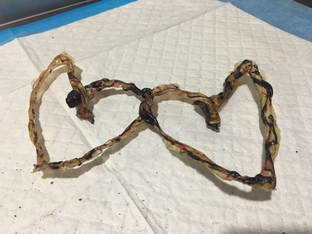
Over the last 11 months there has been a lot of talk about the safety of placenta encapsulation if a mom tests positive for Group B strep due to one case report of a baby from Oregon who got sick from this bacteria. Just days ago, on May 3, 2018, a new study was released that sheds new light on this topic. This article from ScienceDaily.com says:
"The largest study of its kind found mothers who consumed their placenta passed on no harm to their newborn babies when compared to infants of mothers who did not consume their placenta. The joint study by UNLV and Oregon State University was published May 2 in the journal Birth.
Reviewing roughly 23,000 birth records, researchers found no increased risk in three areas: Neonatal Intensive Care Unit admissions in the first six weeks of life; neonatal hospitalization in the first six weeks; and neonatal/infant death in the first six weeks."
Let's review what happened. A baby boy in Oregon got sick when he picked up Group B strep bacteria from his mother during birth. 1 in 4 women are positive for GBS when they give birth. Unfortunately, when this mother was tested (typically around 36/37 weeks of pregnancy) she tested negative and therefore was not treated with antibiotics during labor. It can also go the other way, where mom tests positive at 36 weeks but then is negative at the time of birth. However, until a rapid test that can be done during labor is widely available we continue to unnecessarily treat some moms with antibiotics and miss others who are actually positive for this bacteria.
So, this baby fell ill soon after birth and was hospitalized and treated with antibiotics. He recovered but then soon after got sick again and was re-hospitalized. At this time the placenta capsules the mother had been taking were tested and Group B strep bacteria was found in them. They did not find Group B strep in her breast milk. The CDC concluded that they couldn't be sure why or how baby got sick a second time but that all placenta encapsulation should be avoided.
There are two main issues here. First of all, this mother should have never been consuming her placenta. If mom or baby has an active infection after birth, encapsulation is contraindicated. Second of all, clearly this encapsulator did not follow safe procedures and protocols. When done properly the encapsulation process will kill bacteria. I've discussed this more in-depth here in my prior article on the subject. There are some encapsulators who are not following safe procedures who will encapsulate at around 115 degrees to try to keep a food technically "raw" but this is not safe from a food preparation perspective. If you choose to encapsulate make sure you hire someone with extensive training, knowledge and a separative work space in their home where this process can be done professionally and safely.
Just like we continue to eat chicken and eggs, knowing that proper preparation can keep us safe from harmful bacteria like e coli and salmonella, we can continue to benefit from placenta encapsulation by hiring trained providers and following basic safety precautions.
"The largest study of its kind found mothers who consumed their placenta passed on no harm to their newborn babies when compared to infants of mothers who did not consume their placenta. The joint study by UNLV and Oregon State University was published May 2 in the journal Birth.
Reviewing roughly 23,000 birth records, researchers found no increased risk in three areas: Neonatal Intensive Care Unit admissions in the first six weeks of life; neonatal hospitalization in the first six weeks; and neonatal/infant death in the first six weeks."
Let's review what happened. A baby boy in Oregon got sick when he picked up Group B strep bacteria from his mother during birth. 1 in 4 women are positive for GBS when they give birth. Unfortunately, when this mother was tested (typically around 36/37 weeks of pregnancy) she tested negative and therefore was not treated with antibiotics during labor. It can also go the other way, where mom tests positive at 36 weeks but then is negative at the time of birth. However, until a rapid test that can be done during labor is widely available we continue to unnecessarily treat some moms with antibiotics and miss others who are actually positive for this bacteria.
So, this baby fell ill soon after birth and was hospitalized and treated with antibiotics. He recovered but then soon after got sick again and was re-hospitalized. At this time the placenta capsules the mother had been taking were tested and Group B strep bacteria was found in them. They did not find Group B strep in her breast milk. The CDC concluded that they couldn't be sure why or how baby got sick a second time but that all placenta encapsulation should be avoided.
There are two main issues here. First of all, this mother should have never been consuming her placenta. If mom or baby has an active infection after birth, encapsulation is contraindicated. Second of all, clearly this encapsulator did not follow safe procedures and protocols. When done properly the encapsulation process will kill bacteria. I've discussed this more in-depth here in my prior article on the subject. There are some encapsulators who are not following safe procedures who will encapsulate at around 115 degrees to try to keep a food technically "raw" but this is not safe from a food preparation perspective. If you choose to encapsulate make sure you hire someone with extensive training, knowledge and a separative work space in their home where this process can be done professionally and safely.
Just like we continue to eat chicken and eggs, knowing that proper preparation can keep us safe from harmful bacteria like e coli and salmonella, we can continue to benefit from placenta encapsulation by hiring trained providers and following basic safety precautions.

 RSS Feed
RSS Feed
